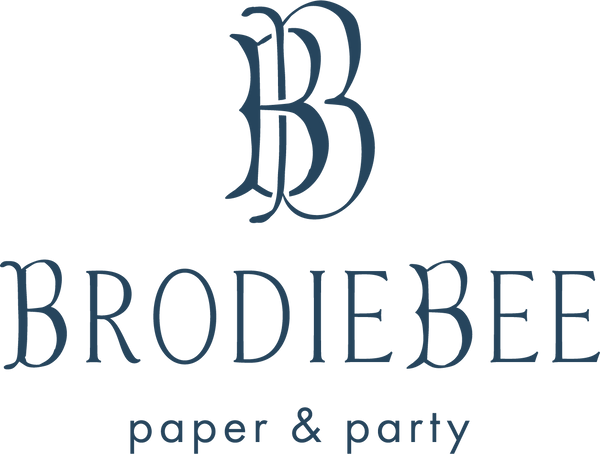Printing 101
Learn how our specialty foil-printing process works, what makes it unique, and what to expect when your custom design is transformed into a beautifully finished product.
-

Digital Printing
Multiple colors are printed smoothly on the item, without any raised or indented impression. This is also referred to as "flat printing."
Paper Items and Stationery
-

Foil Printing
A plate is made of your design then is pressed into each item with a sheet of foil in between. Foils can be metallic, brushed or matte.
Napkins, Matches, Cups, Coasters
-

Screen Printing
Your artwork is turned into a screen or stencil that ink is pushed through onto the item. It is then heat-set for durability, creating opaque, crisp designs.
Neoprene Can Coolers
Printing FAQs
Do you have HEX codes for your foil colors?
HEX codes are specific to digital printing, where colors are created on-screen and reproduced with ink. Foils, however, are pre-manufactured materials, similar to specialty papers or fabrics — they aren’t mixed from digital values.
We recommend referring to our foil swatches or reaching out for photos of our studio samples for the most accurate representation.
Can you print full color matches?
Our matchboxes are made using the foil-printing process, which prints in a single foil color per order. This method creates a clean, elegant finish, but it does not support full-color, photo, or digital-style imagery.
Are your items printed in house?
All of our products are produced by trusted, high-quality print partners who are experts in our specialty methods. This allows us to offer consistent results, a wide range of materials and finishes, and faster production timelines.
How accurate is my proof to the final printed product?
Your proof is a digital preview of your design, and it’s meant to help you confirm that everything looks correct before we send it to print. Please carefully review:
- Text & spelling
- Size of the design
- Placement of the design
- Product color and imprint color
Images and colors displayed on-screen may vary from monitor to monitor, and what you see in your proof may not be an exact representation of the final printed piece. Foil, inks, and materials can look slightly different in person, especially in different lighting, but your proof is the best guide for layout, content, and overall design.
Will colors look different on different products?
The foil colors are the same across our matches, napkins, and coasters, but our cups use a different type of foil and will not be an exact color match. If you are mixing different print methods (screen and foil) color matches also cannot be guaranteed.
Can you match my wedding colors (pantones, HEX codes)?
We’re not able to match specific Pantone, HEX, or digital color codes. Those systems are used for ink-based or digital printing, while our foil colors are pre-manufactured materials, similar to choosing ribbon or fabric swatches.
If you’re trying to coordinate wedding colors, we recommend choosing from our foil and product swatch photos to get the closest visual match. You can also reach out to us for photos of our studio samples.
What type of files do you need for printing?
Vector files (such as .AI, .EPS, or high-quality SVG) allow us to scale and print your artwork with crisp, clean edges. Foil stamping and screen printing don’t work with pixel-based images (like JPGs, PNGs, or screenshots), because those formats lose quality when resized and can produce blurry or jagged lines.
Using vector files ensures that your design prints sharply and accurately at the size required.
What happens if my print arrives slightly misaligned?
With any specialty printing method, a small amount of shift is considered normal. Each piece is printed individually, and slight variations in alignment, pressure, or positioning can occur across a run.
Minor shifts fall within standard production tolerances, but if you ever receive something noticeably off or outside those expected limits, please reach out — we’re always here to help make it right.
Are there limitations to the the style of artwork you are able to print?
Foil stamping and screen printing both require single color artwork, and they also have minimum line-weight requirements. Very thin lines, tiny text, or intricate details may not hold up well in production — they can fill in, break, or appear lighter than expected.
For best results, we recommend avoiding micro-details smaller than the width of a pencil tip. If something in your design is borderline, we’ll let you know during the proofing stage so adjustments can be made.



